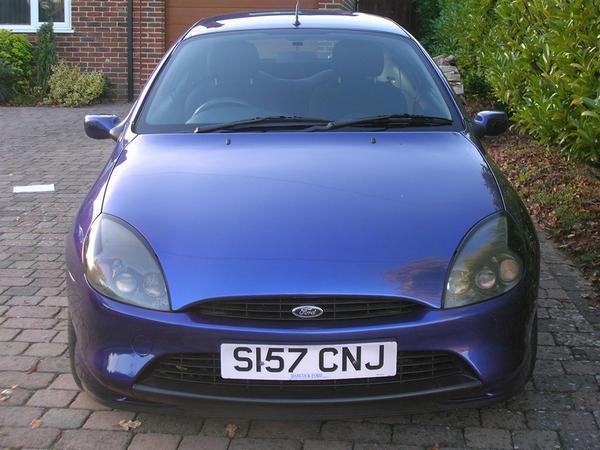Shed of the Week: Ford Puma
A Ford gem to pounce on before it gets away

It might seem unlikely now, in an age when even the most mundane car is stuffed with attention-grabbing interior features and bits of jewellery, but that metal gearknob was one of the three most-talked about features when Ford added this titchy coop to its New Edge range in late 1997. The other two being the Puma's styling and handling, both of which were greatly lauded.
In period, Clarkson called it 'devastatingly handsome' and praised its driveability, though he did keep banging on about it being based on a Fiesta and reckoned it was suspiciously cheap at £14K. Ford cleverly edged JC out of the equation by producing an excellent Steve McQueen ad, which most of you aged 25 and over should remember. If you don't, watch it here.
As time passed, a fourth and rather less welcome topic was added to the Puma conversation: rust. 99 per cent of the ones you will see now will be riddled with it. The most vulnerable areas are the rear arches, but door edges and sills are far from immune.
The fact that this example from the first full year of production looks pretty much the same now as it would have done in the showroom twenty years ago, the odd pin dent apart, is almost as much of a miracle as last week's apparently rust-free Disco V8.
It gets better, too. The Puma came with a choice of three engines, a 1.4, a 1.6 and, in this car, by far the most desirable, the 1.7 VCT. Developed by Ford and Yamaha, VCT stood for Variable Cam Timing - it was the 1.7 Ford's VTEC, if you like - and was easily the best engine choice of the three. In a sub 1,040kg package, it put the Puma within reach of eight second 0-60 performance, a near 130mph top end, and 40mpg in enthusiastic driving. Puma 1.7s also came with standard anti-lock braking and traction control, which again was quite a posh spec back then.
The Japanese connection was stronger than you might think. According to legend, the 1.7 engine was made in Spain, sent off to Japan for Yamaha tweaking, and then sent back to Spain. You can't imagine that sort of thing happening now.
The two potential downsides with the 1.7 were Ford's decision to go with Nikasil cylinder bore plating - a plan that has never really worked for any of the companies brave enough to try it - and the VCT system's oil pressure-controlled varying of the inlet cam. Although there aren't that many reported instances of Nikasil problems on Pumas, it's definitely worth making sure you're using the right grade of oil: 5W30, and semi-synthetic at least.
Core plugs near to the spark plugs are known for leaking coolant, and the thermostat, coil pack and lambda oxygen sensor are all known to fail. Electrically, you might encounter earthing problems caused by rusty earth straps, heater fans and control valves not working properly, and sticking windows (they have their own frame).
Cambelt replacement on the 1.7 is every five years or 80,000 miles (the smaller engines are 10 years/100K). This 73,000-mile car could have been on its original belt and tensioner, but the vendor tells us that it had the work done two years ago as part of the full service history.
Dampness in the passenger carpets usually comes through the bulkhead grommet ducting wiring into the cabin, or it could be a popped-off air-con drain pipe. Mind how you go when opening the tailgate after rain, too, unless you like soggy groceries. The tailgate gas struts usually die, the parcel shelf often comes adrift, and the faux-leather steering wheels have been known to 'melt'.
Puma tracking can quite easily get knocked out of alignment, and that would be a shame because the handling really is a big plus in this car.
The MoT history on our one-owner specimen is practically unblemished, with no advisories in the last six years. If you need any more encouragement to spend the piffling sum of £650, you may well have terminal cynicism. Shed is running an evening class on how to keep your cynicism supply topped up. The price for the course should have been £25 a week, but he's just doubled it and taken out some of the best bits in order to give you that feeling of vindication that you crave.
Selling my September 1998 Ford Puma in Melina Blue. One lady owner from new with full service history. Last MOT'd in August 2017 when it had new front brakes and a service. Has four new tyres in March 2016 and new cambelt and rear silencer in August 2015. A well loved car with only just over 73,500 miles on the clock. Just bought a new car, so no longer required. Runs really well. A classic of the future.
Gassing Station | General Gassing | Top of Page | What's New | My Stuff







